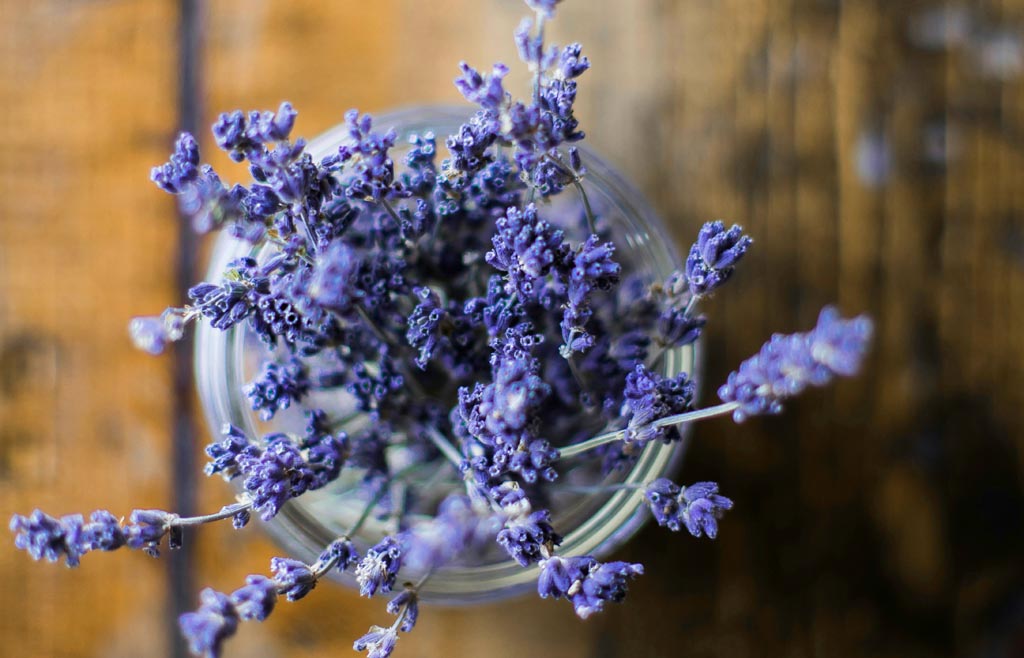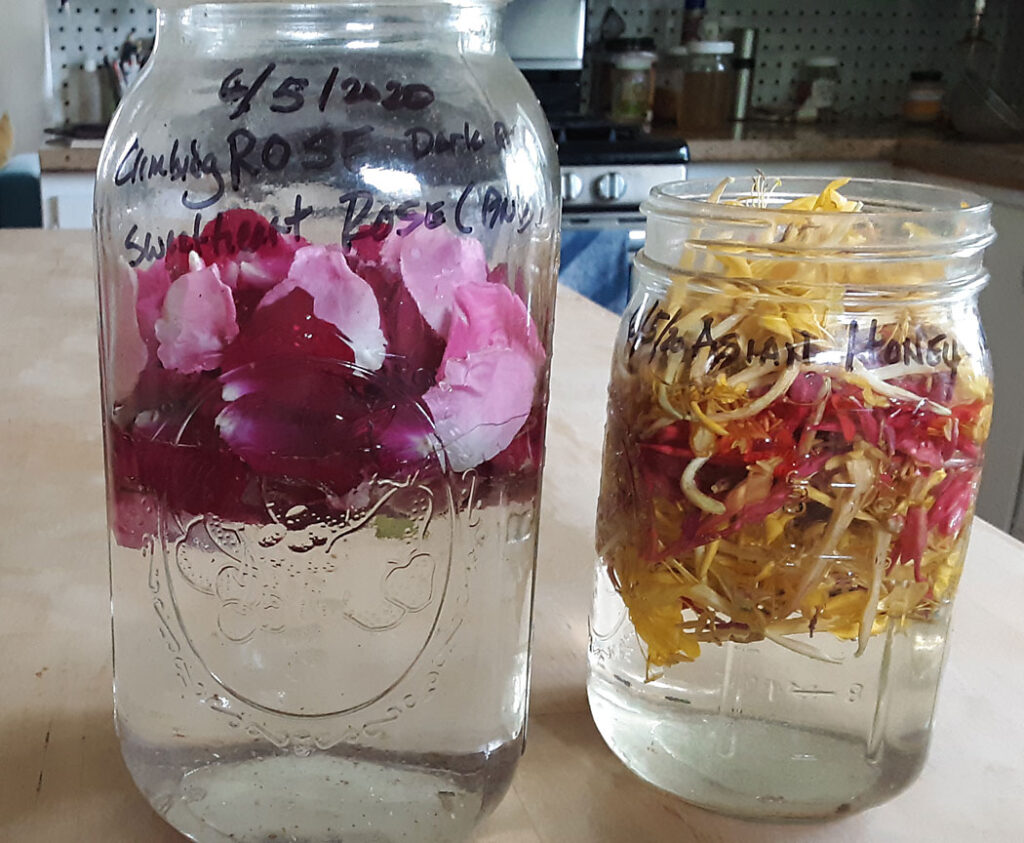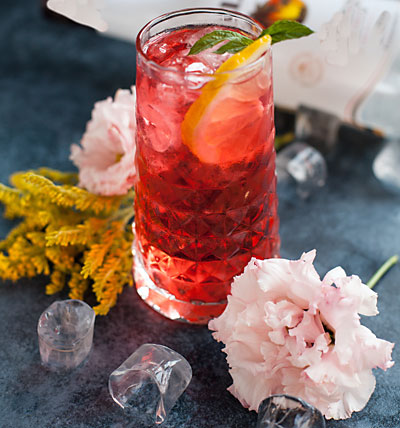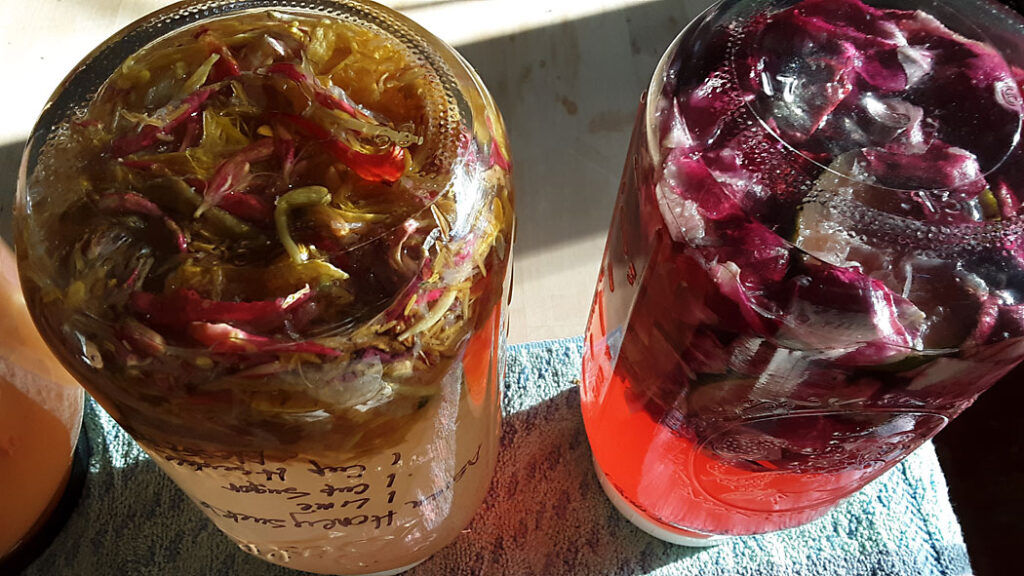
Last year, I moved from my rural home to a lovely cottage on 3rd Street in Fairfield. It was the first location that felt right after 27 years at an idyllic location where I poured my heart into manifesting an intimate connection with nature.
The previous owner was an enthusiastic gardener, and as the summer unfolded, I discovered that every two weeks a vast array of flowers would explode into my yard like fireworks in slow motion. I had always grown fruit, as well as berries, herbs, and vegetables, but I was intimidated by flowers. They were so tenuous—incredible beauty for one instant, then gone! So first I would learn to care for them, then maybe learn to imbibe their fruit.
What are flowers, really, but the highest vibration of plant life and nature itself? Flowers are a magnificent display of color, beauty, scent, and structure, as if they’re saying, “Wake up, grab hold of this exquisite life experience. Life is this moment, now!”
As it would happen, last September a dear friend and I attended the Midwest Wild Harvest Festival in Prairie du Chien, Wisconsin, a gathering of wild food harvesters from around the globe. In between incredible meals prepared by professional chefs, we attended hands-on workshops to identify wild foods and watched demonstrations on making food from foraged wilds. It was there that I learned the art of creating floral cordials.

A floral cordial is basically a water infusion of flower petals, stamens, and pollen. The flower parts are collected, placed in a container like a mason jar, covered with good-quality water, a sugar source (dried fruit, honey, turbinado sugar, coconut sugar, raw sugar, or maple syrup), and an acidifier such as lemon juice or apple cider vinegar.
The jar is set in a warm place (80 degrees) for two days and shaken several times per day, after which the floral parts are removed and the jar is set to ferment. Whether you cap the jar, preventing oxygen from entering, or leave it uncovered determines whether the cordial moves toward wine or vinegar. But once the floral parts are removed, you may wait until bubbles appear, cap the jar, and place it in the refrigerator. This sweet infusion, within a day’s time, will become soda, an effervescent elixer with floral tastes and aroma.
Other Floral Drinks

The soda quality will quickly move toward wine, and each day that the fermentation continues, the soda will become less sweet as the sugars are converted into alcohol or vinegar. Once the fermentation is complete and without visible bubbles (or pressure in the bottle), the bottle can be placed in a cool area where it will age into a wine. If the jar is left uncovered, you’ll end up with a high-quality vinegar when the fermentation is complete.
This vinegar can be then turned into another type of thirst-quenching beverage called “switchel.” To make switchel, mix vinegar with water, lemon juice, and ginger. Use sparkling water if you want a carbonated beverage, and if you like it sweeter, add concentrated dark cherry juice. This is an excellent beverage that restores electrolytes lost from sweating, making it superb for hydration during the summer.
Another summertime drink that isn’t floral but is wonderfully refreshing is made by filling a jar with berries and filling the remaining volume with a mixture of half vinegar and half maple syrup. Cap the jar, shake, and set aside overnight or for a few days. The liquid poured off the berries is called “scrub.” After the liquid is poured off, the berries can be dried, crushed, and used as a sprinkle on salads or desserts.
In all these processes, there is no limit! Wild fermentation is a living process and each variable provides unlimited possibilities of aromas and flavors.

There are also simpler drinks using flowers that can be prepared in minutes. These are cold infusions. (Please note that the flowers must be edible.) Lilacs and rose petals have a subtle scent and flavor. Peonies are also wonderful for making soda, wine, or vinegar. Flowers can be put in a mason jar with cool, clean water, and within minutes they will impart their taste and aroma into the water. The greater volume of flower parts, the quicker the infusion. These are basically the same as herbal teas, but the flavor will be different in a cold infusion than it would be in a hot infusion. And working with fresh flower parts produces different flavors than working with dried flower petals or buds.
Others you might try are the flowers of basil, tulsi, the mints, and other aromatic herbs you are fond of. All of these cold infusions make wonderful cooling drinks for summer and seldom need any sweetener.
Last year for Thanksgiving I made Rose Hibiscus Cordial, Elderflower Cordial, Lavender Cordial, Red Clover Blossom Cordial, and a water-extracted elderberry syrup in honey. All of these are easily made, but because there were no fresh flowers in my garden, I bought bulk herbs, spices, and dried flowers at our local whole foods store. When using dried flowers, use half as much as fresh since the drying process concentrates the flavor. As with any preserved or dried food, the taste doesn’t quite compare with the fresh.
If you have a special occasion coming up that you’d like blessed, please consider making a floral libation.
Would you like to experience Floral Water, Floral Soda, Floral Cordial, Floral Vinegar, and other floral libations? Paul would love to share his knowledge. Please contact him at paulgpoole@gmail.com and he will arrange a date for a group sampling and questions.
